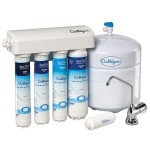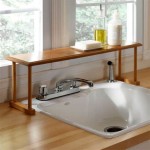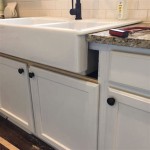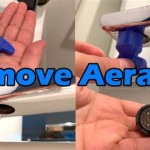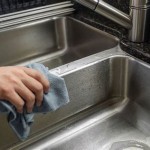How to Unblock a Sink Drain
A blocked sink drain is a common household plumbing issue that can be addressed with various methods, ranging from simple DIY solutions to professional intervention. This article outlines several effective techniques to unblock a sink drain, enabling homeowners to troubleshoot and resolve the problem.
Initial Assessment and Preparation: Before attempting any drain clearing method, assess the blockage's severity. A slow-draining sink indicates a partial blockage, while standing water signifies a complete obstruction. Protect surrounding surfaces with old towels or newspapers to prevent water damage during the unblocking process. Gather necessary tools, such as a plunger, plumbing snake, or a drain cleaning tool, depending on the chosen method.
Boiling Water: One of the simplest methods involves using boiling water. Carefully pour a kettle of boiling water down the drain. This method works best for minor blockages caused by grease or soap buildup, as the hot water melts these substances, allowing them to flow freely down the drain.
Baking Soda and Vinegar: This natural method utilizes a chemical reaction to dislodge blockages. Pour one cup of baking soda down the drain, followed by one cup of vinegar. The mixture will fizz, indicating the chemical reaction. Let it sit for 30 minutes, then flush the drain with hot water. This method is effective for removing mild to moderate build-ups of organic matter.
Plunger: A sink plunger, specifically a cup plunger, is designed to create suction and pressure within the drain, dislodging the blockage. Fill the sink with enough water to cover the cup of the plunger. Place the plunger over the drain opening, ensuring a good seal. Plunge vigorously up and down for several minutes, then remove the plunger. Check if the water drains freely. Repeat the process if necessary.
Plumbing Snake: A plumbing snake, also known as a drain auger, is a flexible tool used to reach deeper clogs. Insert the snake into the drain opening and rotate it while pushing it further down. The snake's hooked end will either break up the blockage or allow it to be pulled out. Once the snake is fully extended or resistance is met, slowly retract the snake, cleaning any debris caught on the hook. Flush the drain with hot water to clear any remaining residue.
Disassembling the P-Trap: The P-trap, the curved pipe located under the sink, is designed to trap debris and prevent sewer gases from entering the house. Place a bucket under the P-trap to catch any water. Carefully loosen the slip nuts connecting the P-trap to the drain pipes. Remove the P-trap and clean out any debris, hair, or buildup. Reassemble the P-trap, ensuring the slip nuts are tightened securely to prevent leaks.
Chemical Drain Cleaners: Commercial drain cleaners contain powerful chemicals that dissolve clogs. Follow the manufacturer's instructions carefully, as these chemicals can be corrosive and hazardous. Wear appropriate protective gear, such as gloves and eye protection. Pour the recommended amount of drain cleaner down the drain and let it sit for the specified time. Flush the drain thoroughly with water. Chemical drain cleaners should be used as a last resort due to their potential environmental impact and potential damage to pipes with repeated use.
Prevention: Preventing future blockages is often easier than dealing with a clogged drain. Avoid pouring grease or oil down the drain. Use a strainer to catch hair and other debris. Flush the drain regularly with hot water, and periodically use baking soda and vinegar as a preventative measure. These simple steps can significantly reduce the likelihood of future blockages and maintain a freely flowing drain.
Professional Assistance: If the blockage persists despite attempting these methods, or if there are signs of more significant plumbing issues, it is recommended to contact a qualified plumber. A professional plumber has the expertise and specialized tools to diagnose and resolve complex plumbing problems effectively.
Choosing the Right Method: The best method for unblocking a sink drain depends on the nature and severity of the blockage. For minor clogs caused by grease or soap, boiling water or baking soda and vinegar may be sufficient. For more stubborn blockages, a plunger or plumbing snake may be required. Disassembling the P-trap allows for direct access to the blockage, while chemical drain cleaners should be used cautiously and as a last resort. Knowing when to call a professional plumber is crucial for avoiding further damage and ensuring a properly functioning plumbing system.

How To Unclog A Sink The Right Way

How To Unblock A Kitchen Sink 7 Methods Qs

How To Unclog A Sink The Experts Simple Steps Drain

5 Natural Ways To Unclog A Bathroom Sink Hiller How

How To Unblock A Sink In 5 Ways With Household Items

How To Unblock A Kitchen Sink 7 Methods Qs

How To Unclog A Bathroom Sink Hana S Happy Home

How To Unblock A Bathroom Sink City

How To Unblock A Kitchen Sink 7 Methods Qs

Unblocking Sink Blocked Unblock Kitchen Bathroom
